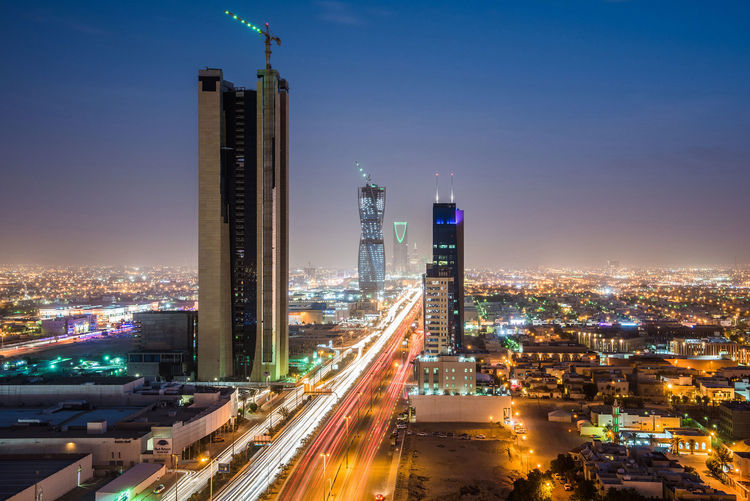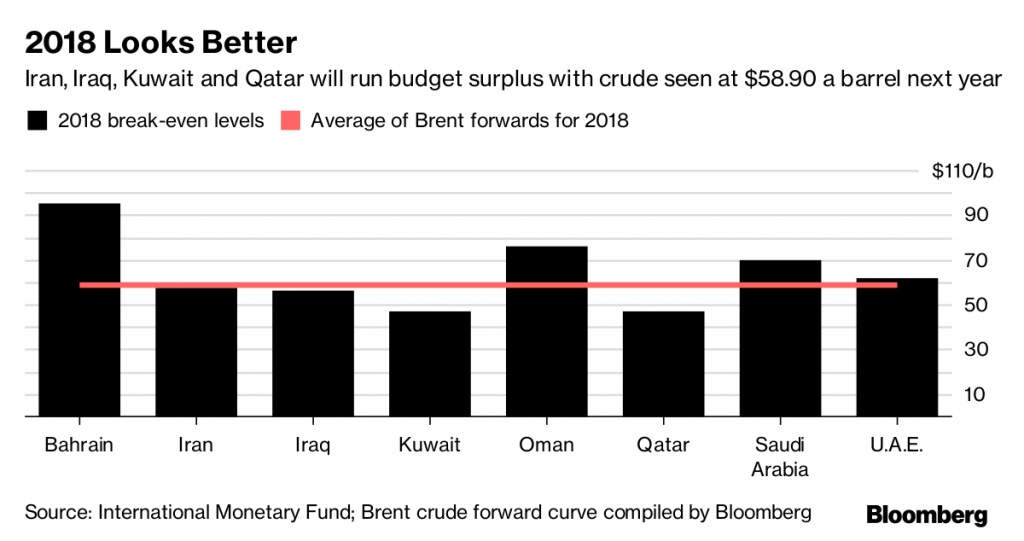
Saudi Arabia, OPEC’s biggest oil producer, is also a leader when it comes to slashing the crude price the country needs to balance its budget.
The kingdom will need oil to trade at $70 a barrel next year to break even, the Washington-based International Monetary Fund said Tuesday in its Regional Economic Outlook for the Middle East and Central Asia. That’s down from a break-even of $96.60 a barrel in 2016, the biggest drop of eight crude producers in the Persian Gulf. The break-even is a measure of the crude price needed to meet spending plans and balance the budget.
Gulf oil producers are cutting spending and eliminating subsidies after crude plunged from more than $100 a barrel in 2014 to average just over half that this year. The need to curb spending is more urgent with the Organization of Petroleum Exporting Countries cutting output to reduce a global glut. Oil will trade at $50 to $60 a barrel for the “medium term,” the IMF said. Benchmark Brent crude was on track Tuesday for a second consecutive monthly gain and traded at $61.01 a barrel at 7:20 p.m. in Dubai.
“The reality of lower oil prices has made it more urgent for oil exporters to move away from a focus on redistributing oil receipts through public sector spending and energy subsidies,” the IMF said.
Iran, Iraq, Kuwait and Qatar will have break-evens below the oil price, more than enough to balance the budget in 2018, according to IMF estimates and forward Brent price data compiled by Bloomberg. Countries like Saudi Arabia will take longer to balance their budget, the IMF said.
None of the producers have yet created economies that will support their population “once hydrocarbon resources are exhausted,” the IMF said.
Recommended for you

